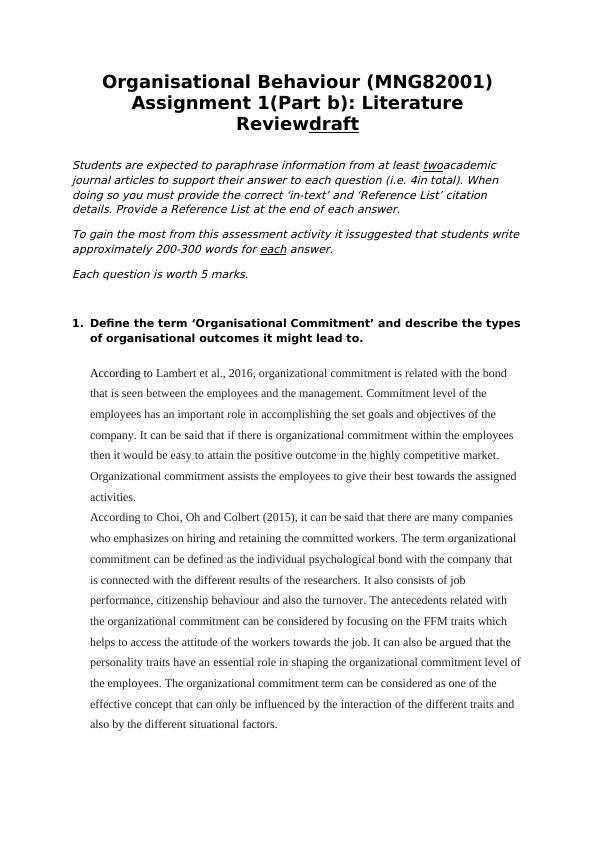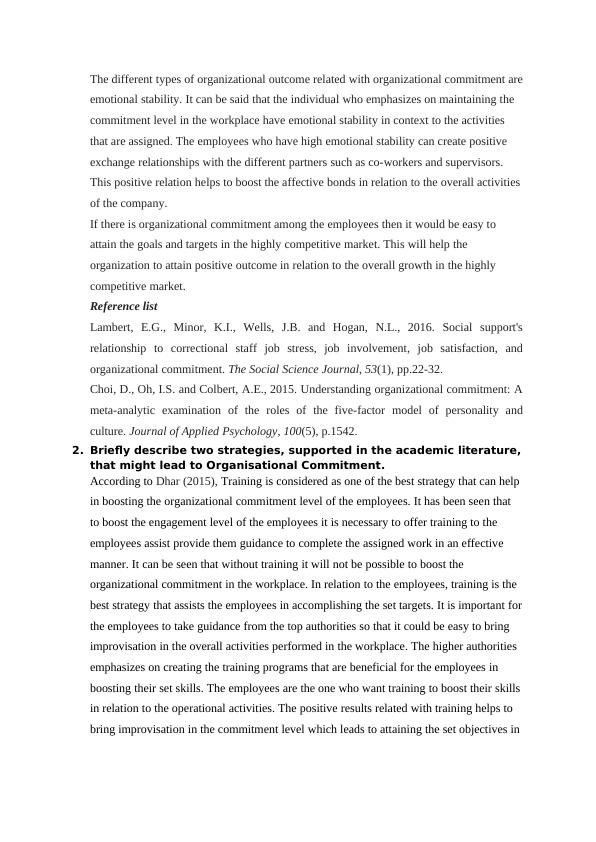Organisational Commitment and its Types
Paraphrase information from academic journal articles to define and describe organisational commitment and its outcomes, and to describe strategies for building organisational commitment.
4 Pages1057 Words28 Views
Added on 2023-01-12
About This Document
This document provides an overview of the term 'Organisational Commitment' and describes the types of organisational outcomes it might lead to. It also briefly discusses two strategies supported in the academic literature that can enhance organisational commitment. The document includes references from academic journal articles.
Organisational Commitment and its Types
Paraphrase information from academic journal articles to define and describe organisational commitment and its outcomes, and to describe strategies for building organisational commitment.
Added on 2023-01-12
ShareRelated Documents
End of preview
Want to access all the pages? Upload your documents or become a member.
Strategies in relation to organizational commitment
|6
|1860
|75
Organisational Commitment and its Types
|3
|809
|53
Organisational Commitment and its Types
|3
|1070
|346
Strategies for Building Organizational Commitment
|6
|1773
|75
Job Satisfaction in INA Food Industry
|6
|1258
|317
Organisational Commitment and its Types
|3
|1039
|42


